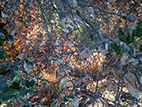Now Available: 7 New Exhibition Files from John Smith
Posted February 26th, 2024 in Announcements, New Acquisitions, New Digital Files, News / Events
Canyon Cinema is excited to announce the acquisition of 7 exhibition files from longtime member John Smith. This deposit includes recent digitizations of 16mm experimental film classics such as The Girl Chewing Gum (1976), The Black Tower (1987), and Associations (1975), among others.
John Smith was born in Walthamstow, London in 1952. He studied at North-East London Polytechnic and the Royal College of Art, after which he became an active member of the London Filmmakers’ Co-op. Inspired in his formative years by conceptual art and structural film, but also fascinated by the immersive power of narrative and the spoken word, he has developed a diverse body of work that subverts the perceived boundaries between documentary, fiction, representation, and abstraction. Often rooted in everyday life, his meticulously crafted films playfully explore and expose the language of cinema.
Since 1972 Smith has made over sixty film, video, and installation works that have been shown in independent cinemas, art galleries, museums, and on television around the world. His films have been awarded major prizes at international film festivals in Oberhausen, Leipzig, Hamburg, Stuttgart, Graz, Geneva, Uppsala, Pamplona, Bordeaux, Lucca, Palermo, Split, Cork, Seoul, Ann Arbor and Chicago. He received a Paul Hamlyn Foundation Award for Artists in 2011, and in 2013 he was the winner of Film London’s Jarman Award.
John Smith lives and works in London. His work is held in the collections of Tate Gallery; Arts Council England; Museum of Modern Art, New York; Muzeum Sztuki, Lodz; FRAC Île de France, Paris; Kunstmuseum Magdeburg; Ella Fontanals-Cisneros, Miami; Wolverhampton Art Gallery and Ferens Art Gallery, Hull. His films are distributed by LUX, London; Video Data Bank, Chicago; Canyon Cinema, San Francisco and Light Cone, Paris. He is represented by Tanya Leighton, Berlin and Kate MacGarry, London. Smith is Emeritus Professor of Fine Art at University of East London, where he taught part-time for nearly 40 years.

Gargantuan (1992, 1 minute, color, sound, 16mm or digital file)
“London artist John Smith uses light-hearted humor to explore theoretical concerns – Gargantuan, for instance, is both pleasantly silly and acutely conscious of how imagery depends entirely on its framing. A voice-over intones the words ‘huge’ and ‘strapping’ as a lizard almost fills the screen, then ‘medium’ as the camera zooms out, then ‘tiny’, and finally ‘minute’, a pun on the film’s running time.” – Fred Camper, Chicago Reader
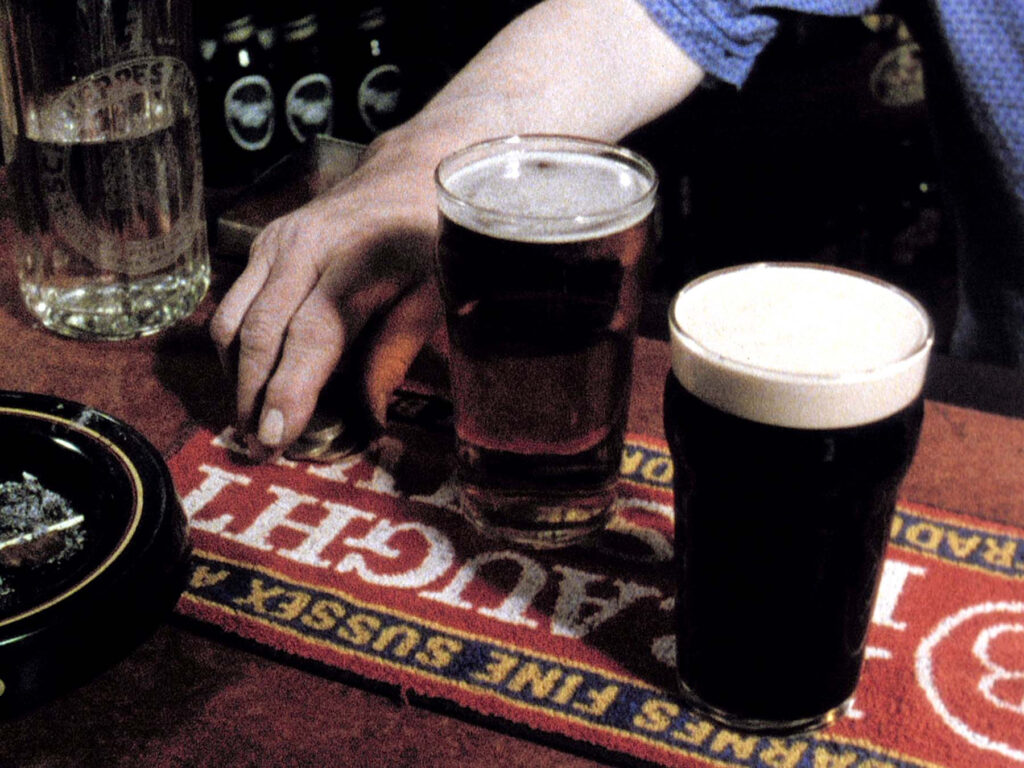
Slow Glass (1988-91, 40 minutes, color, sound, 16mm or digital file)
“A mesmerizing experimental documentary that presents a discussion of the manufacture of glass as a way to explore memory and transformation. Filled with Smith’s signature witty wordplay and elegant visual punning, Slow Glass also quietly ponders weighter issues of urban transformation and the value placed on craftsmanship.” – Alexander Stewart, notes for screening at Pioneer Works, New York, 2015
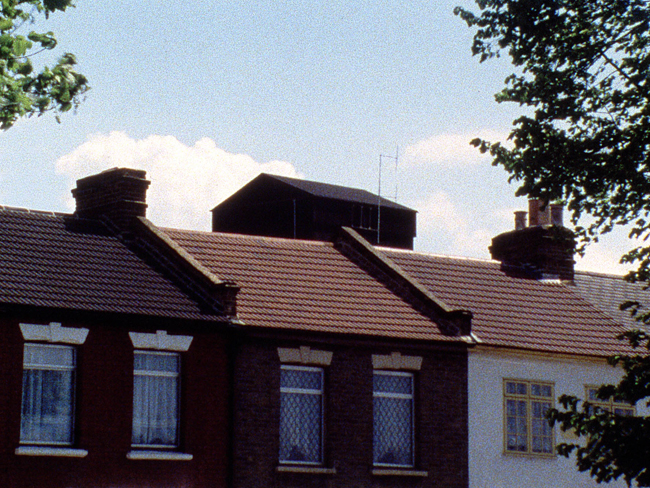
The Black Tower (1987, 24 minutes, color, sound, 16mm or digital file)
“The Black Tower expands the core of Smith’s interests: chiefly, the image as a filmic fact which is constantly questioned and often undermined by language and soundtrack. Like his earlier films, The Black Tower is concerned with description, but this time framed by a story whose undertow of melancholy balances its wit and wry humour, and which is a remarkable fiction in its own right.” – A.L. Rees
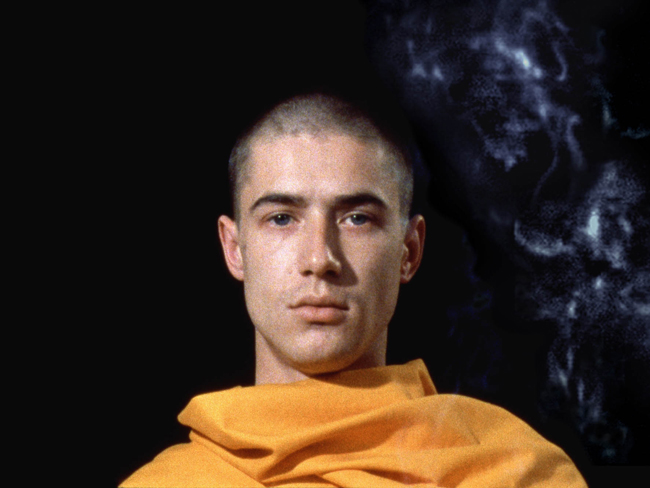
Om (1986, 4 minutes, color, sound, 16mm or digital file)
“This four minute film explores our response to stereotypes – aural, visual and ideological. Smith signals these stereotypes to the viewer through a chiefly associational system, which deftly manipulates the path of our expectations. The structure is stunningly simple and deceptively subtle. We are taken on a journey from one concrete stereotype to its diametric opposite, as images transform and juxtapose to, ultimately, invert our interpretation of what we see and hear.” – Gary Davis
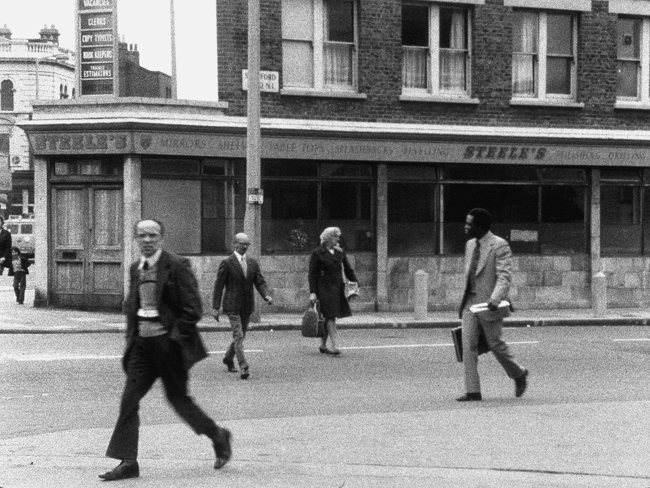
The Girl Chewing Gum (1976, 12 minutes, b&w, sound, 16mm or digital file)
“Self-reflexivity is another Brit kick, semi-spoofed in The Girl Chewing Gum (1976), in which artist John Smith directs street-level passersby via post-synched voice-over, then bids buildings and the sun to move through the frame. Smith takes the piss out of mainstream auteurist ego, but provides proof of the underground ethos: Even with meager mechanical means, the artist can command the universe.” — Ed Halter, Village Voice

Associations (1975, 7 minutes, color, sound, 16mm or digital file)
Images from magazines and color supplements accompany a spoken text taken from Word Associations and Linguistic Theory by Herbert H Clark. By using the ambiguities inherent in the English language, Associations sets language against itself. Image and word work together/against each other to destroy/create meaning.
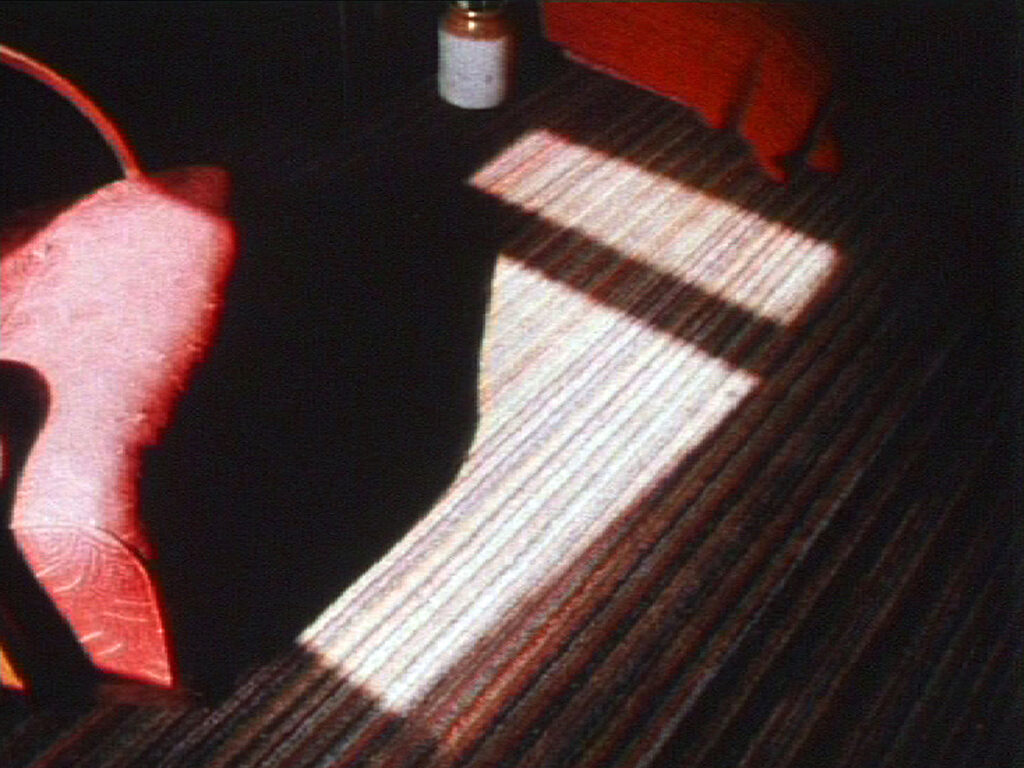
Leading Light (1975, 11 minutes, color, sound, 16mm or digital file)
“John Smith’s Leading Light evolves a sense of screen depth and surface through the simple agency of light. The film is shot in a room over a period of a day and records the changes in light through the single window. The image is controlled through the manipulation of aperture, of shutter release, of lens, but the effect is more casual than determined and the spectator is aware primarily of the determining nature of following sunlight.” – Deke Dusinberre, Perspectives on British Avant-Garde Film catalogue.


